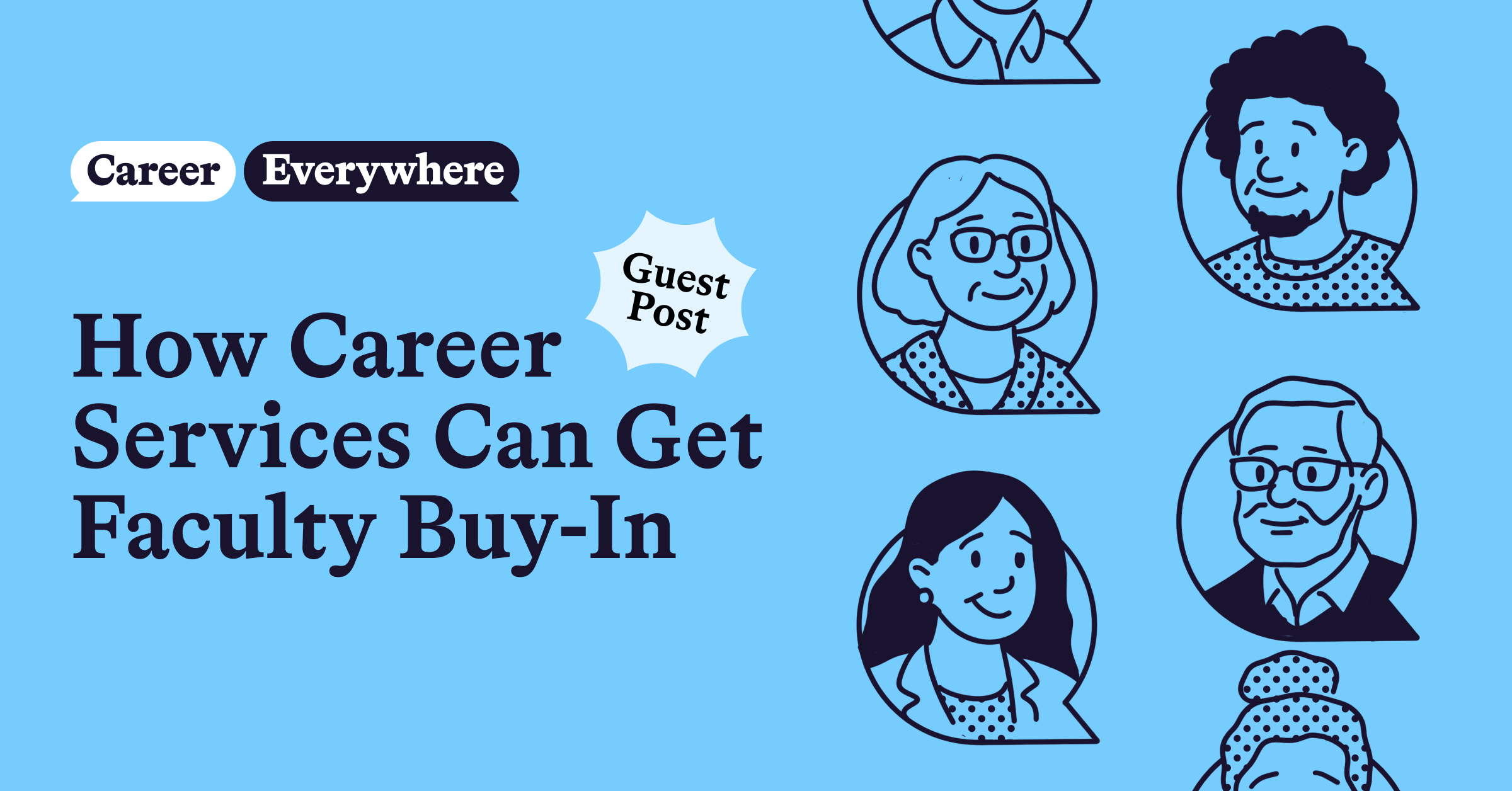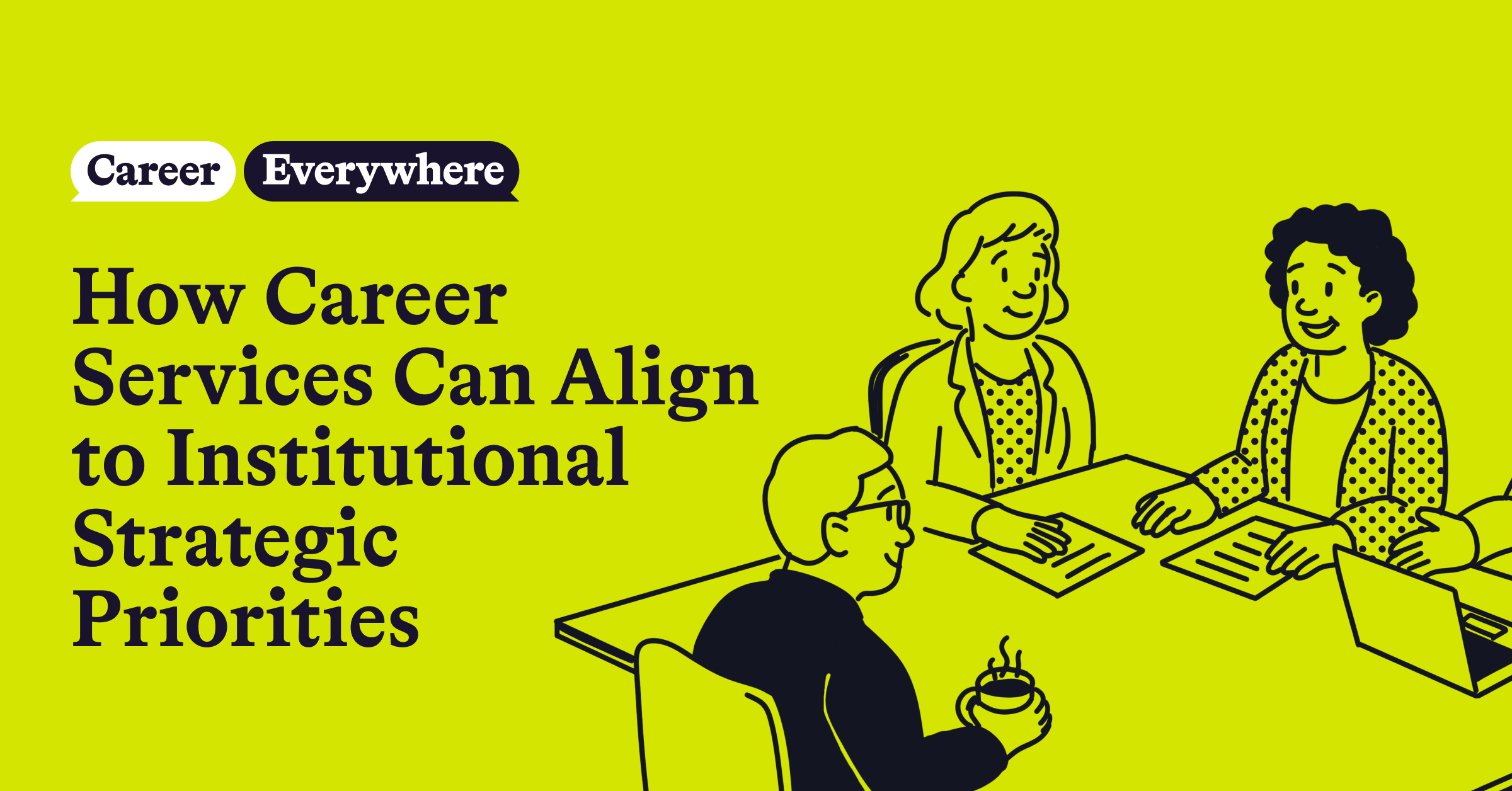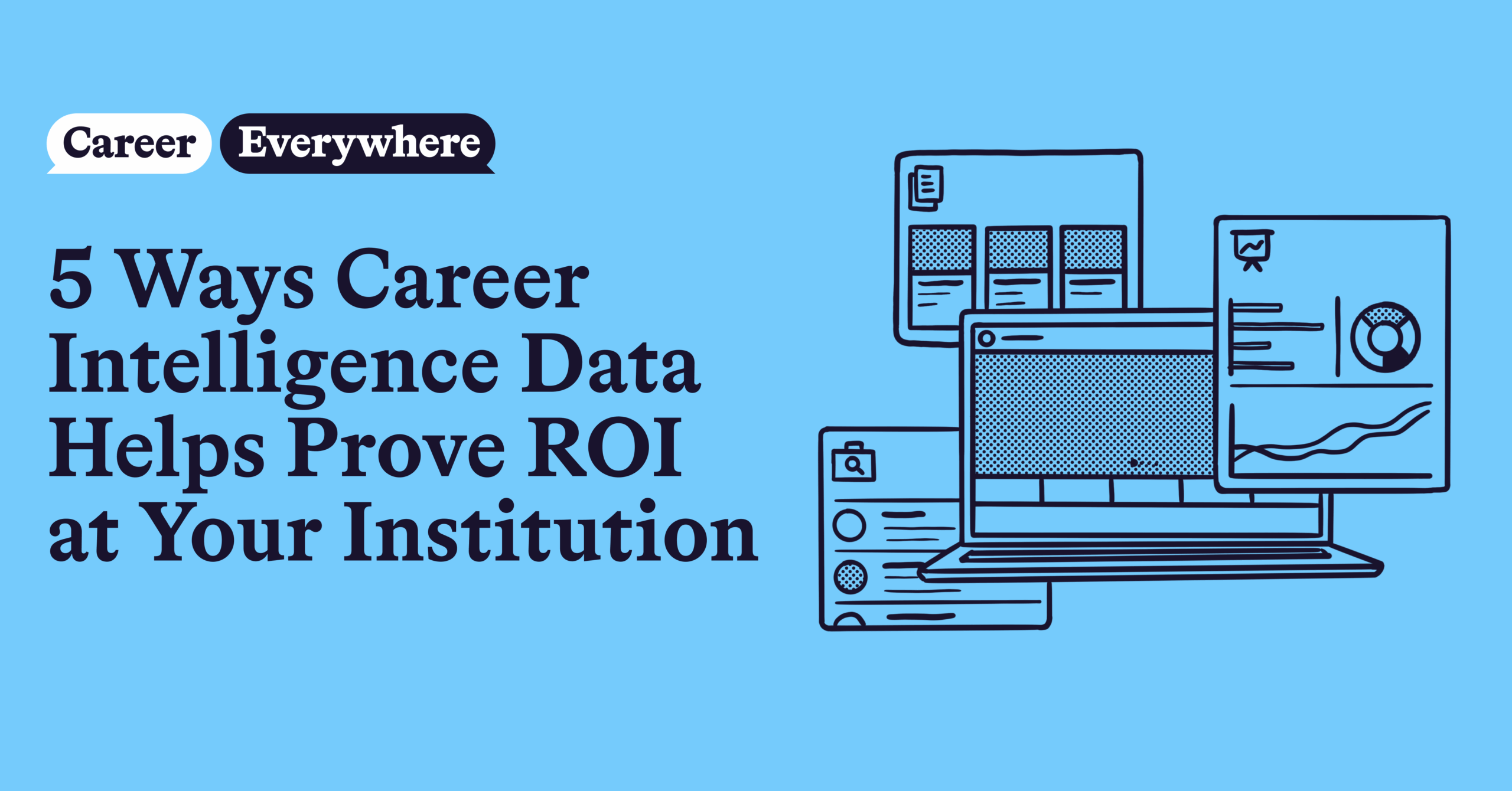
If you’ve ever tried to partner with faculty on a career initiative and felt like you were speaking another language, you’re not alone. Faculty are often seen as the golden ticket to scalable, equitable student impact—and yet, building that bridge isn’t always easy.
The good news? It’s not just possible. It’s powerful. But it starts with reframing.
Start with the academic mission
Let’s be honest: Career services has a bit of a PR problem in some academic circles.
For too long, it’s been framed as transactional, job-focused, and separate from the intellectual heart of higher education. On mission-driven campuses, particularly in the liberal arts, this makes “career” feel like a dirty word—something that reduces education to a resume line.
But here’s the better truth: Career development is where the liberal arts come alive. It’s where:
- Ideas meet impact
- Socratic dialogue becomes civic action
- Academic inquiry translates into community leadership and economic mobility
Career services doesn’t compromise the mission. It completes it.
How?
- Bringing learning to life through real-world application
- Empowering faculty partnerships with curriculum-integrated career tools
- Boosting retention through purpose-driven engagement
- Advancing institutional outcomes like ROI, rankings, and career success
- Fostering lifelong learning with durable, transferable skills
Why faculty buy-in matters
Faculty are more than content experts. They are mentors, motivators, and models for how students think about their future. When faculty talk about career, it resonates.
They also expand our reach. Not every student walks into the career center—but every student goes to class. Faculty can normalize career conversations for every student, not just the career-ready few.
And faculty bring weight. Their involvement lends credibility, opens doors with institutional leadership, and taps into powerful networks of alumni, donors, and employers.
In short: faculty partnership isn’t just nice to have. It’s mission-critical.
Why it’s hard (and 6 things we can do about it)
Faculty are busy. Their plates are full. And let’s face it: some still view career services as vocational, remedial, or not their job.
Add in communication barriers, institutional silos, and structural inequities, and it’s no wonder this work can feel uphill.
So what do we do?
1. Know your levers
Work with the influencers: Deans, chairs, program directors. These are the folks who shape faculty priorities and norms. Provide them with data, curated resources, stories of success, and information about how they can help.
With uConnect, you can create custom one-stop shop community pages for academic leaders that demonstrate how your work drives student success, retention, and academic mission alignment. See this example from the University of Texas Permian Basin.
2. Get clear on roles
You’re not asking faculty to become career advisors. You’re inviting them to partner in meaningful, manageable ways. They teach. You equip.
At Quinnipiac, the CAS360 platform (powered by uConnect) helps faculty and advisors share a consistent language around career, supported by shared tools—not new burdens.
3. Add value
Support what faculty already care about: teaching, mentoring, student growth. Give them ready-to-use resources that make their work easier, not harder.
With uConnect, create a career competency page with sample assignments, NACE-aligned outcomes, syllabus statements, and email templates. Partner with departments to align content with course themes—especially in high-impact areas like service learning.
4. Identify your champions
Some faculty are already having career conversations with students—they just need tools, support, and visibility, as well as the knowledge that they are working in tandem with you.
Create a downloadable Faculty Toolkit with integration strategies and classroom-ready materials. Here are two examples: University of Miami and University of Texas Permian Basin.
5. Make it easy
Remove friction. Provide low-lift, just-in-time resources. Use automation and personalization to connect faculty with what they need, when they need it.
At Miami, the Toppel Career Center embedded RSS job feeds on department websites so students and faculty see curated opportunities in real time. (Here’s an example from the College of Arts and Sciences). With uConnect, you can do the same—and layer in automated emails, tagging, and content preferences to meet faculty where they are.
6. Celebrate involvement
Appreciation goes a long way. Recognition builds momentum. And faculty love to see their peers succeed.
Start with thank-you notes (cc the chair). Launch a Faculty Career Impact Award. At Miami, the annual Toppel Awards celebrate faculty, staff, students, and employers who go above and beyond. With uConnect, you can highlight winners and share their stories online.
Career services isn’t just a department. It’s a movement. And when faculty are part of that movement, the ripple effect is real.
With the right frame—and the right tools—we can make faculty buy-in more than a buzzword. We can make it a campus-wide force for student success. Career Everywhere!


